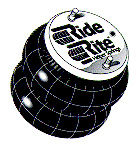|
How
does an air suspension work?
Everyone
knows how cool an air suspension is, but how do they work?
Air suspensions are nothing new. They have been used on the
Big Rigs and other industrial vehicles for a long time. In
the early days of bagging a vehicle, you would have to make
your own brackets and purchase each piece needed. Today it
has gotten much easier. Companies like Air Ride Technologies,
CCE Air Systems, and Chassis Tech make this much easier. These
companies have developed complete bolt-on systems for most
vehicles. Because of these companies we now have safe and
reliable air suspension systems.
 An
air suspension system consists of several components. The
first item in the air suspension system is the air springs.
The three main types of air springs are air bags, air cylinders,
and air struts. Air bags are basically a rubber cylinder.
Air cylinders are metal cylinders similar to hydraulic cylinders.
And air struts are a strut with an air bag on top. Air springs
replace your current springs and depending on your vehicle,
the shocks. Air springs can be inflated and deflated to raise
and lower the height of the vehicle. An
air suspension system consists of several components. The
first item in the air suspension system is the air springs.
The three main types of air springs are air bags, air cylinders,
and air struts. Air bags are basically a rubber cylinder.
Air cylinders are metal cylinders similar to hydraulic cylinders.
And air struts are a strut with an air bag on top. Air springs
replace your current springs and depending on your vehicle,
the shocks. Air springs can be inflated and deflated to raise
and lower the height of the vehicle.
 The
next part of the system is the air source. Air sources can
be on-board or through a tube from an external air source.
On-board air systems are the best because it allows you to
have air anytime. On-board air systems consist of one or more
air compressors and air tanks. The on-board system will allow
you to raise and lower the vehicle anytime. The external system
would use a compressor at a gas station or in a garage. These
are the most economical, but the least practical. The only
way to air the bags up is to take the vehicle to the location
of the air compressor. You don't have the ability to raise
or lower the vehicle at will. The
next part of the system is the air source. Air sources can
be on-board or through a tube from an external air source.
On-board air systems are the best because it allows you to
have air anytime. On-board air systems consist of one or more
air compressors and air tanks. The on-board system will allow
you to raise and lower the vehicle anytime. The external system
would use a compressor at a gas station or in a garage. These
are the most economical, but the least practical. The only
way to air the bags up is to take the vehicle to the location
of the air compressor. You don't have the ability to raise
or lower the vehicle at will.
 The
last component, this is only valid for vehicles with on-board
air systems, is the air valves. A basic valve will allow you
to raise and lower the front and back of the vehicle. More
complex valves will give you front, back, side to side (F,B,S,S).
The valves work by letting air in or out of the air springs.
The air valve sits in between the on-board air source and
the air springs. Valves come in two flavors, manual and electric. The
last component, this is only valid for vehicles with on-board
air systems, is the air valves. A basic valve will allow you
to raise and lower the front and back of the vehicle. More
complex valves will give you front, back, side to side (F,B,S,S).
The valves work by letting air in or out of the air springs.
The air valve sits in between the on-board air source and
the air springs. Valves come in two flavors, manual and electric.
Manual
valves are nothing more than a pneumatic switch. The switch
and the valve reside in the same location. Manual valves are
slower than electric valves. Electric valves are just what
it says. These valves work by using electricity to power the
valves. A switch box is used to control these valves and can
be wired to provide several FBSS configurations. You can have
one switch that lowers all four corners at the same time,
one that lowers just the right side, one the raises all four
corners, etc. Electric valves are much faster than the manual
valves and provide more functionality.
I hope
this will shed some light on the subject of air bags. If you
want more information, check us online or email us at sales@kmwperformance.com.
Vincent
Wright
sales@kmwperformance.com
kmwperformance.com
|








